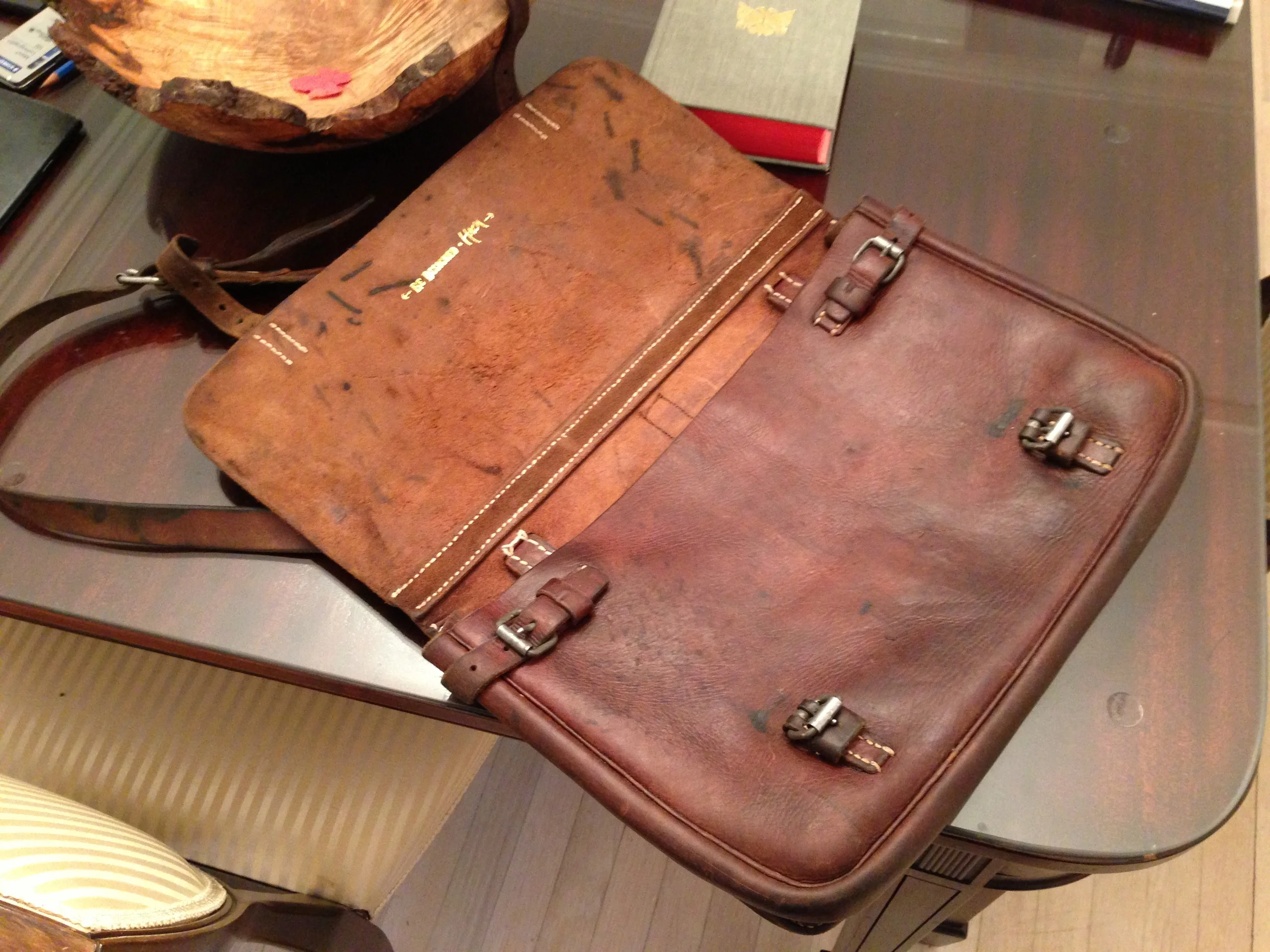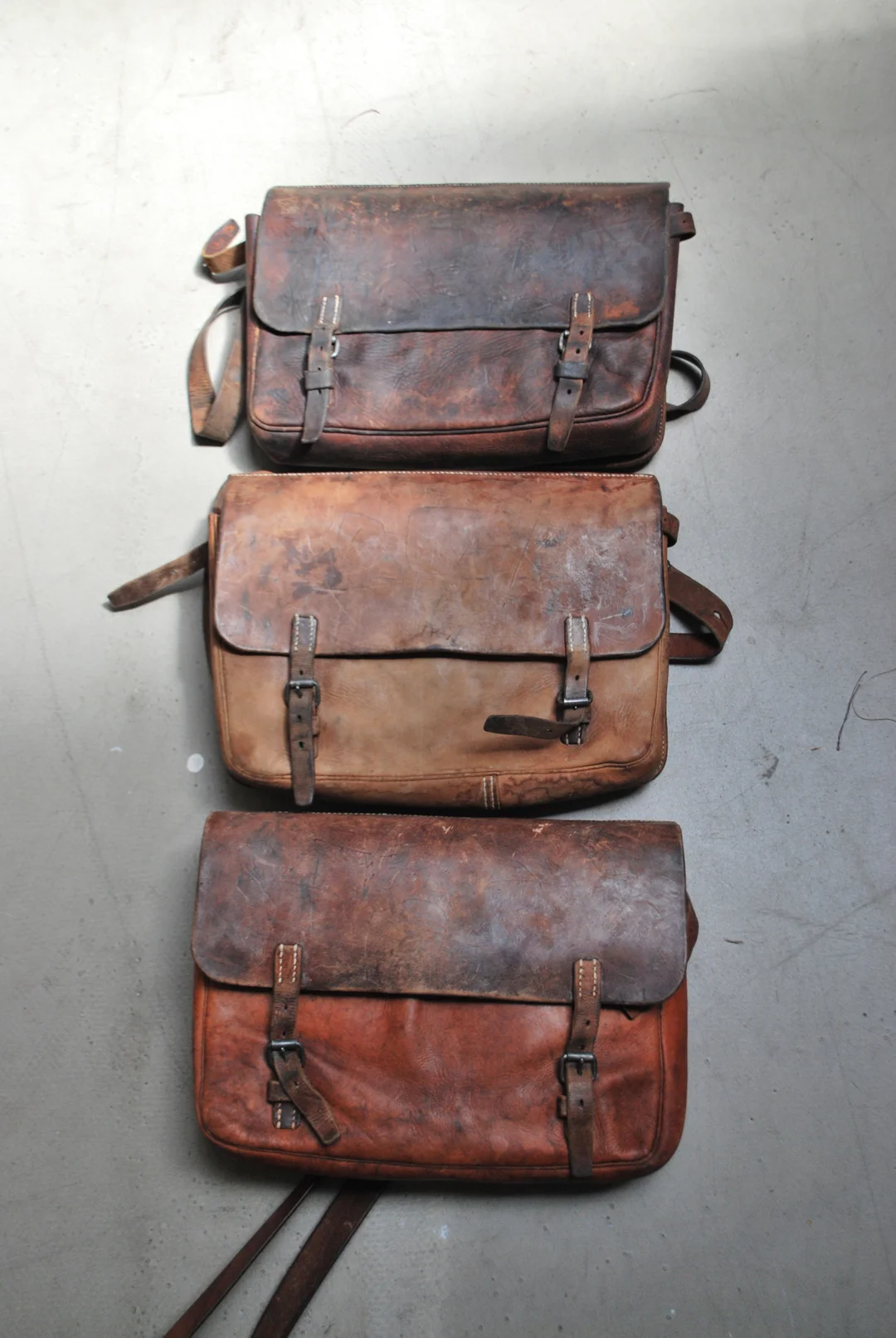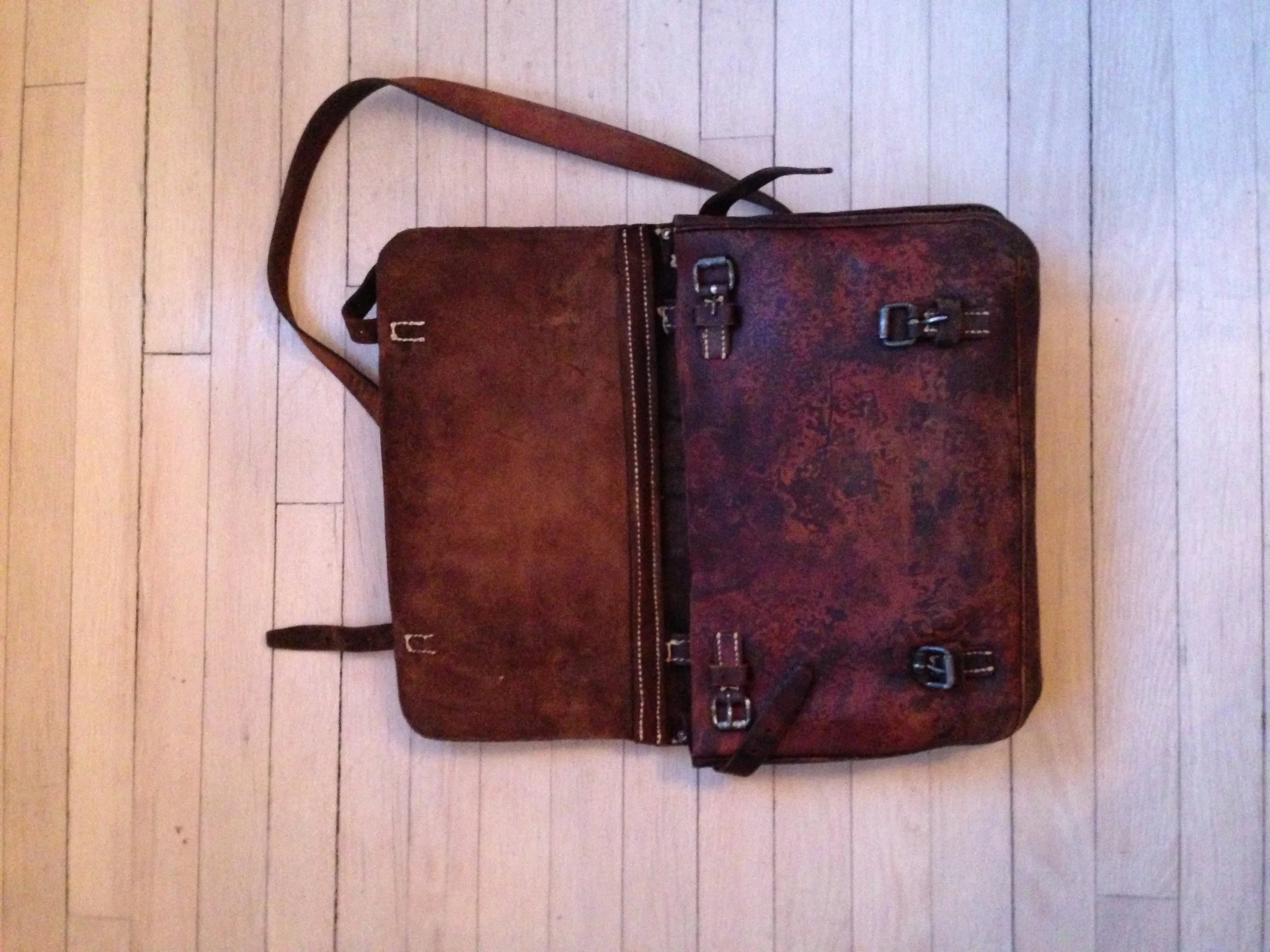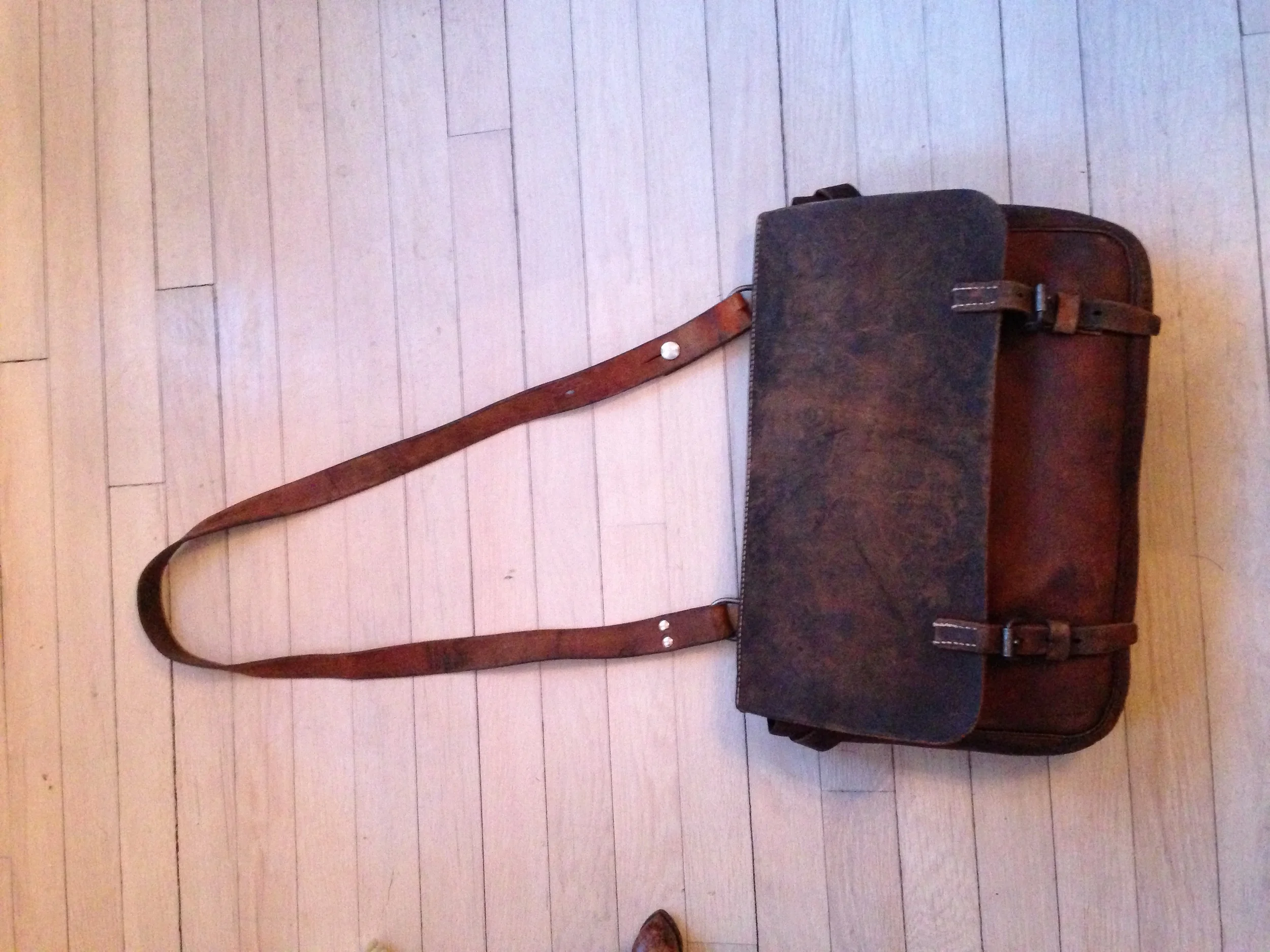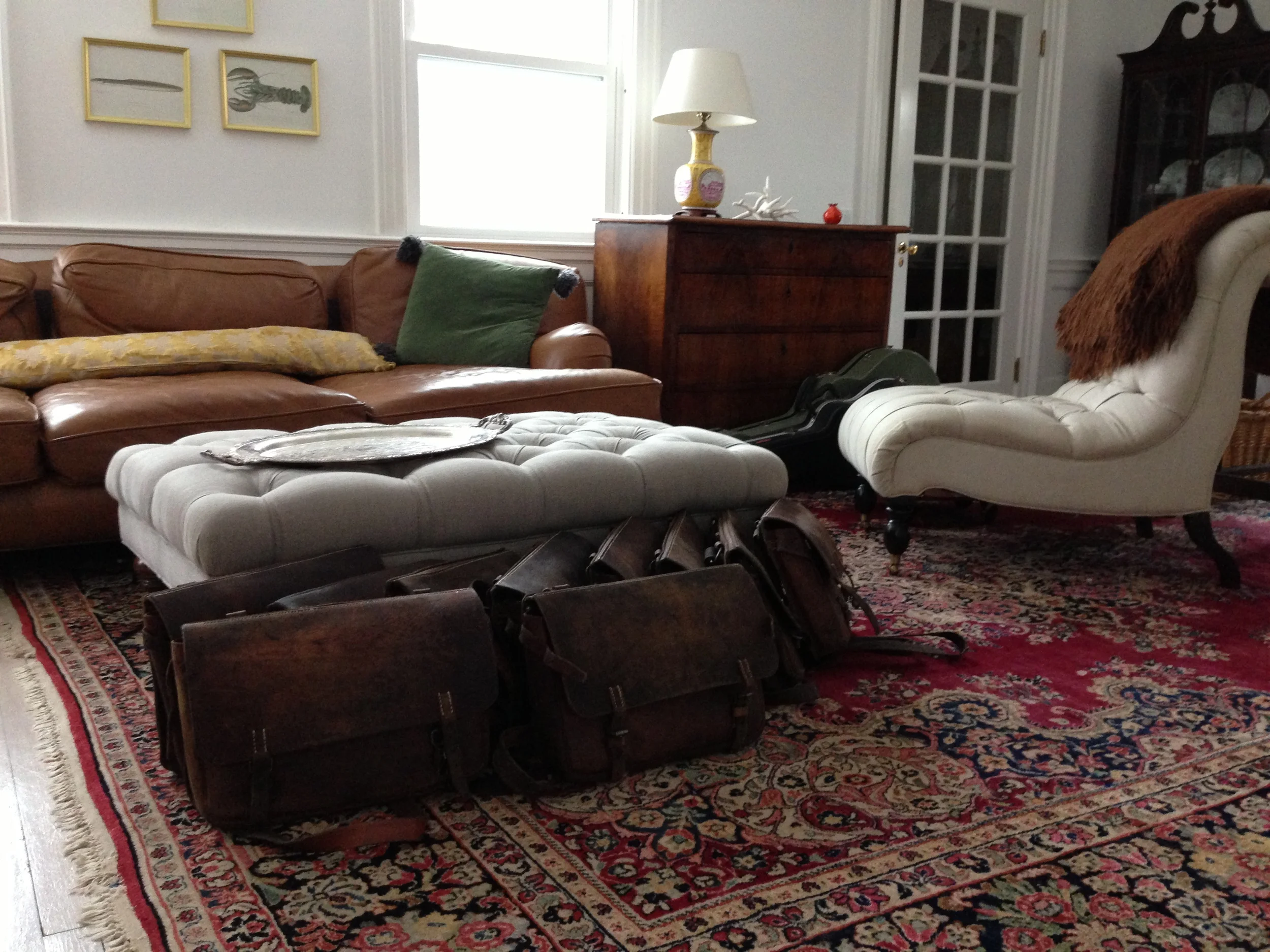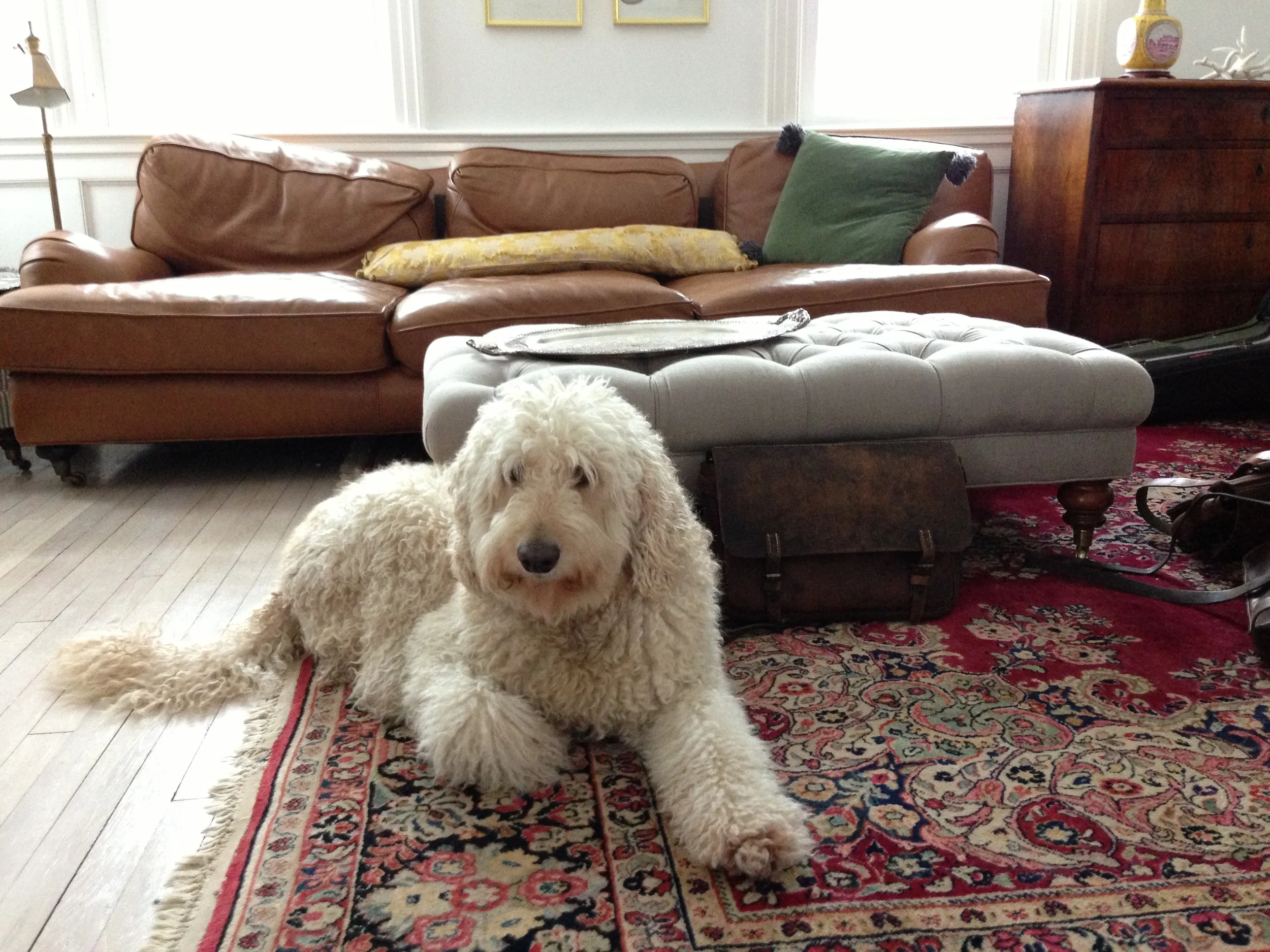The Bag - Man's Other Best Friend
The last of a stash of World War II Swiss leather mule saddlebags. We haven't done much. We didn’t need to. These are all hand-made by Swiss master saddlers when saddle making was a middle-class profession. If you look at the back of the bag (in the upper middle) you can see the each saddlers’ maker’s mark stamped into the leather. There is variation: some have copper rivets, some steel. Who knows where each bag has been. Who knows what action they have seen. Production lasted from 1937 until 1945 so each bag is at least 70 years old and still useful — the two digit number on the back tells you the year it was made. You’ll also see a Swiss cross stamp. They scream quality.
There are only 25 of these bags and when they are gone I have no idea if I will be able to find more. So as they say, "Get 'em while they last!"
There is enough fat and oil in the leather so its still supple — and a real danger to white clothes! — until the leather naturally polishes itself from daily use. You could probably buff it with a terry cloth towel if you like. I didn’t. It made a real mess of a white shirt. A month later my white shirts were safe, after a year it's got that shiny patina from being well used.
Sign of a happy bag.
Swiss WWII Saddle Bag Satchel
Swiss WWII Saddle Bag Satchel
This Bag’s Story
Sometime last Spring my friend Steve began harassing me about my bag.
There was nothing wrong with my backpack. It had straps. It held things. It was black, easy to throw in the wash, doubled as a carry-on, and could even hold a bullet-proof plate. Steve pointed out people expected something different from a monk. Something weather-beaten and leather that had street cred and soul black Cordura fabric just couldn’t match. I was unmoved. The money had been spent.
About the same time I had been working to establish our Syria Project to help refugees and others in the Middle East, requiring travel to what I once heard a diplomat refer to as a “tough neighborhood.” Usually I blend right in — few look twice at an Orthodox monk in the Middle East. One day someone started speaking English instead of the usual Arabic, Hebrew or Greek. "Why English?", I asked. "Well, because no Arab or Greek would have an American military backpack," came the reply.
Steve was right. The backpack had to go.
I needed something to hold my modern day technology plus a little while walking the streets from Damascus to Beirut, Amman to Jerusalem. But leather bags are expensive and my “brand” is sort of anti-fashion. If it’s serviceable and durable great, if it’s flashy and demands attention not so great. So the search for a new bag began.
Six months later it ended in a small leather goods store in Cologne, Germany. The owner, Christoph, had come into a stash of World War II Swiss leather mule saddlebags. He didn’t do much. He didn’t need to. They were all hand-made by Swiss master saddlers when saddle making was a middle-class profession. If you look at the back of the bag (in the upper middle) you can see the each saddlers’ maker’s mark stamped into the leather. There is variation: some have copper rivets, some steel. Who knows where the bag had been. Who knows what action they had seen. Production lasted from 1937 until 1945 so each bag was at least 70 years old and still useful — some have a two digit number on the back that tells you the year it was made. You’ll also see a Swiss cross stamp. They scream quality. I bought it immediately.
There was enough fat and oil in the leather that it was still supple — and a real danger to white clothes! — until the leather naturally polishes itself from daily use. You could probably buff it with a terry cloth towel if you like. I didn’t. It made a real mess of a white shirt. Five months later my white shirts are safe.
One time I took the bag to Nashville and some other friends made a big deal about it — wanted to know where I had gotten it. So I said I’d figure out a way to track down a few and buy some more.
This bag you now hold in your hands is one of the first dozen I imported from Switzerland via Germany. Once these are gone I’ll use the profits from the sale to head to Switzerland directly to try to find more. We might end up with a small stable of the very best products at reasonable prices. Those profits will go directly towards underwriting administrative costs of St. Paul’s Foundation. So by buying this bag you're both living well and doing good.
Use and enjoy this bag in good health — wherever you go you’ll be a local — and if you’re not, remember it can also fit a bulletproof plate in addition to your laptop.

